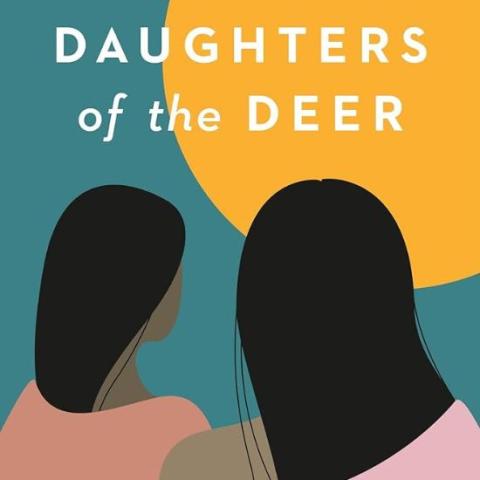Our latest Staff Picks are books by Indigenous authors that offer powerful stories and perspectives.
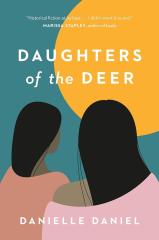
Daughters of the Deer by Danielle Daniel
Set in 1657, this captivating novel follows Marie, a skilled healer from the Deer Clan, who is compelled to marry a French soldier despite her reluctance. As her people face threats from disease, starvation, and conflict, Marie sacrifices her freedom for their survival. Years later in 1675, her daughter Jeanne, caught between her Algonquin and French heritage, grapples with her identity and forbidden love for another woman. While revered as two-spirited among her mother's people, Jeanne faces condemnation and danger in New France. This powerful story of survival and identity is a must-read. - Jennifer D.
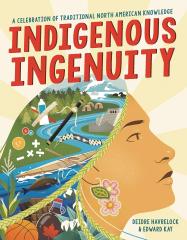
Indigenous ingenuity : a celebration of traditional North American knowledge by Deirdre Havrelock
This book shares the long history of indigenous knowledge through easy-to-read text. There were images sprinkled throughout that made the information, science, and knowledge easy to digest and understand. I really liked the STEM activities mixed throughout that help you understand the science and knowledge being shared. Indigenous knowledge was mainly from Turtle Island indigenous peoples. Highly recommend for learning Indigenous Knowledge and Science, that is interactive and engaging. - Mary

The Marrow Thieves by Cherie Dimaline
A young adult dystopian novel taking place in the far future when climate change has ruined the earth. For some reason, most of the population has lost the ability to dream, except for Indigenous people. When it is discovered that it is possible to “harvest” the ability to dream from the Indigenous peoples’ marrow, they are hunted. This story follows a group of Indigenous individuals of all ages who have come together and are trying to survive by travelling North. The Elders of this group share their knowledge of the past with the youth and they form a sort of family who live in the wilderness and live off the land.
This book is heartbreaking yet hopeful. It borrows from reality and expresses the violence that Indigenous people have experienced across history - the trauma of colonialism, cultural genocide, residential schools, and the loss of identity, language and community. A very fast-paced read with a layered story, I highly recommend this book for anyone, especially high school students. Trigger warning: death and violence. -- Emma
The Marrow Thieves by Cherie Dimaline
Set in a futuristic world where millions have died due to a global warming crisis and the remaining population has experienced such extensive trauma, they have lost the ability to dream. Only the Indigenous people continue to dream and now they are being hunted so scientists can use their bone marrow to restore dreams to the rest of the population. A teen survival story at its core, The Marrow Thieves is filled with historical parallels linking this speculative fiction with the real exploitation of the Indigenous peoples and the land. - Natashia
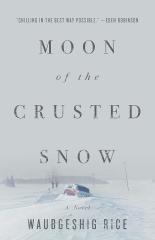
Moon of the Crusted Snow by Waubgeshig Rice
In my opinion, although this book is considered Fiction, it closely parallels reality amongst Indigenous community members in that it follows an Anishinaabe community and their struggles with unexpected visitors, illness, and death. I like this book because it brings forward hope and re-connection to friendship, community and tradition in order to help restore their community. It is a story of hope, resilience, and inspiration of a better world. - Kassy
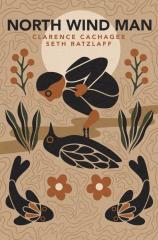
North Wind Man: A Tale of Strength and Perseverance by Clarence Cachagee
Uncover the remarkable journey of Clarence Cachagee in “North Wind Man”, a compelling memoir co-written with Seth Ratzlaff. As a survivor of the Sixties Scoop, Cachagee has triumphed over numerous challenges to establish himself as the founder and Executive Director of Crow Shield Lodge. He candidly recounts his path to healing and reconciliation, delving into the intricate layers of trauma, addiction, and the unyielding strength of the human spirit.
This extraordinary book intertwines Cachagee’s personal experiences with the rich histories of the Waterloo Region and Chapleau Cree First Nation, providing a deep insight into Indigenous narratives and the strength found in community. North Wind Man stands as a beacon of hope, showcasing the transformative power of human relationships. - Ashley
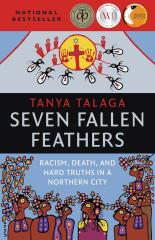
Seven Fallen Feathers: Tanya Talaga
An investigative journalist inquires into the deaths of seven Indigenous students from around the Thunder Bay area. She comes across as unapologetically honest and upfront with the systemic racism, human rights violations and police indifference and dismissiveness towards Indigenous folks and communities, specifically their deaths. I highly appreciate her dedication to shine a light on the very real injustices experienced by so many Indigenous people and communities. - Kassy
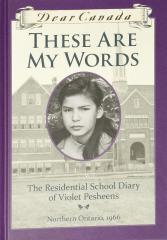
These are my words : the residential school diary of Violet Pesheens by Ruby Slipperjack
This book from the Dear Canada Diary series is written for kids aged 9-12. It's presented as the diary of Violet Pesheens, a young girl living in a Northern Ontario residential school in the late 1960s. Violet watches the Monkees on TV, making it the most modern story in the series. The book is tough and upsetting, but it's a powerful way to help readers, both kids and adults, understand and empathize with the children in those schools. While it's recommended for ages 9-12, it might be too intense for sensitive kids. As an adult, I found it deeply moving. - Elisa

